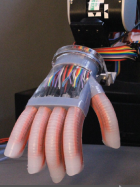This is Part 2 of "Hell, hope and healing," an NCR four-part series on sexual abuse. You can read previous entries on the feature series page Hell, hope and healing.
|
|
by Mary Gail Frawley-O'Dea
|
Hell, hope and healing, Part 2: In
the first article of this series I discussed the commonality and damage
of adverse childhood experiences (ACEs), including clergy sexual abuse.
Here, I focus on the hope that most trauma survivors can heal because
of inherent or learned resilience and/or through access to healing
resources.




